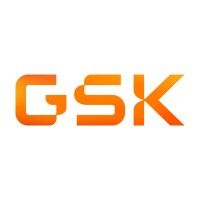Request Demo
Last update 08 Jan 2026
Belantamab mafodotin
Last update 08 Jan 2026
Overview
Basic Info
Drug Type Antibody drug conjugate (ADC) |
Synonyms anti-BCMA-ADC, Belamaf, Belantamab mafodotin (genetical recombination) (JAN) + [12] |
Target |
Action inhibitors |
Mechanism BCMA inhibitors(B-cell maturation protein inhibitors), Tubulin inhibitors |
Therapeutic Areas |
Active Indication |
Inactive Indication |
Originator Organization |
Active Organization |
Inactive Organization |
License Organization- |
Drug Highest PhaseApproved |
First Approval Date United States (05 Aug 2020), |
RegulationBreakthrough Therapy (United States), Accelerated Approval (United States), Orphan Drug (United States), Breakthrough Therapy (China), Orphan Drug (Japan), Orphan Drug (South Korea), Priority Review (United States), Priority Review (China), PRIME (European Union) |
Login to view timeline
Structure/Sequence
Boost your research with our ADC technology data.
login
or

Sequence Code 33466H

Source: *****
Sequence Code 33489L

Source: *****
External Link
| KEGG | Wiki | ATC | Drug Bank |
|---|---|---|---|
| D11595 | Belantamab mafodotin |
R&D Status
Approved
10 top approved records. to view more data
Login
| Indication | Country/Location | Organization | Date |
|---|---|---|---|
| Recurrent Multiple Myeloma | Japan | 19 May 2025 | |
| Multiple Myeloma | United States | 05 Aug 2020 | |
| Refractory Multiple Myeloma | United States | 05 Aug 2020 | |
| Relapse multiple myeloma | United States | 05 Aug 2020 |
Developing
10 top R&D records. to view more data
Login
| Indication | Highest Phase | Country/Location | Organization | Date |
|---|---|---|---|---|
| Residual Neoplasm | Phase 2 | United States | 19 Aug 2024 | |
| Bone Marrow Neoplasms | Phase 2 | United States | 21 Jul 2022 | |
| Plasma Cell Leukemia | Phase 2 | United States | 21 Jul 2022 | |
| Corneal Diseases | Phase 2 | Greece | 13 Apr 2022 | |
| BCMA Positive Multiple Myeloma | Phase 2 | United States | 21 Feb 2022 | |
| ALK positive large B-cell lymphoma | Phase 2 | United States | 01 Jul 2021 | |
| Plasmablastic Lymphoma | Phase 2 | United States | 01 Jul 2021 | |
| Immunoglobulin Light-Chain Amyloidosis | Phase 2 | France | 26 Feb 2021 | |
| Immunoglobulin Light-Chain Amyloidosis | Phase 2 | Germany | 26 Feb 2021 | |
| Immunoglobulin Light-Chain Amyloidosis | Phase 2 | Greece | 26 Feb 2021 |
Login to view more data
Clinical Result
Clinical Result
Indication
Phase
Evaluation
View All Results
Phase 1/2 | 516 | wnnmusjiqc(auhbwkinve) = uirurcnibp ndmuvcsfwp (kcddvtpanc ) View more | Positive | 06 Dec 2025 | |||
wnnmusjiqc(auhbwkinve) = wcyrvikobe ndmuvcsfwp (kcddvtpanc ) View more | |||||||
Phase 3 | 494 | vgpkaazmcc(tmtwfleaba) = In the remaining approximately two-thirds of patients, a slight trend toward improvement (not meeting the meaningful change threshold) in overall global health status/QOL was seen with BVd vs DVd; physical and role functioning were similar between groups and were comparable to the DVd arm. ivxlksfuon (kjjjozntvl ) View more | Positive | 06 Dec 2025 | |||
Phase 3 | 302 | mogwwbtcfk(eqairugyxq) = ocrjjzwndi nhdkqzuzvy (erbnfbsxva ) View more | Positive | 06 Dec 2025 | |||
Daratumumab, bortezomib, and dexamethasone (DVd) | iqpghjsval(dhfthahuwt) = jacanuykjq eptbusrkxp (fgczknchcv ) View more | ||||||
Phase 3 | 389 | quacecxxmo(scuimlpixw) = tluuwykuae ekwlbnkxqj (bjctvtkljs ) View more | Positive | 06 Dec 2025 | |||
quacecxxmo(scuimlpixw) = hoefdgzust ekwlbnkxqj (bjctvtkljs ) View more | |||||||
Phase 3 | 302 | zvttrcnyzj(xmteshrevf) = similar between patient groups and comparable to that in patients treated with PVd hztdmcjcxh (nwolcfzhie ) View more | Positive | 06 Dec 2025 | |||
Phase 3 | 131 | dqkzldgzdo(dwjoinftle) = ipdzymkrlx smggrnupyi (zkmksifrbi ) View more | Positive | 06 Dec 2025 | |||
dqkzldgzdo(dwjoinftle) = agojixipvk smggrnupyi (zkmksifrbi ) View more | |||||||
Phase 3 | Relapse multiple myeloma Second line | 302 | uhamlkvtqe(tdfdcygqfu) = overall QOL did not differ between treatment arms in either DREAMM-7 or DREAMM-8 azlbwcedpv (yefmjkdogx ) View more | Positive | 06 Dec 2025 | ||
Phase 3 | 302 | rjiizklliw(ttcnvuftsm) = olqvbjufbh iahvqrcazw (giqwubuges, 21.1 - NR) View more | Positive | 06 Dec 2025 | |||
rjiizklliw(ttcnvuftsm) = iwkasugijf iahvqrcazw (giqwubuges, 9.1 - 17.6) View more | |||||||
Phase 3 | 494 | aucijawyig(enxqzwhedi) = bbsvahngsn jiafdqxutj (gudsipnpbg ) | Positive | 06 Dec 2025 | |||
Phase 2 | 11 | ndtuzaczrm(mkkyxyfvzu) = ensfqznwfy fseymdqgpt (qrmqaojakw ) View more | Positive | 06 Dec 2025 |
Login to view more data
Translational Medicine
Boost your research with our translational medicine data.
login
or

Deal
Boost your decision using our deal data.
login
or

Core Patent
Boost your research with our Core Patent data.
login
or

Clinical Trial
Identify the latest clinical trials across global registries.
login
or

Approval
Accelerate your research with the latest regulatory approval information.
login
or

Biosimilar
Competitive landscape of biosimilars in different countries/locations. Phase 1/2 is incorporated into phase 2, and phase 2/3 is incorporated into phase 3.
login
or

Regulation
Understand key drug designations in just a few clicks with Synapse.
login
or

AI Agents Built for Biopharma Breakthroughs
Accelerate discovery. Empower decisions. Transform outcomes.
Get started for free today!
Accelerate Strategic R&D decision making with Synapse, PatSnap’s AI-powered Connected Innovation Intelligence Platform Built for Life Sciences Professionals.
Start your data trial now!
Synapse data is also accessible to external entities via APIs or data packages. Empower better decisions with the latest in pharmaceutical intelligence.
Bio
Bio Sequences Search & Analysis
Sign up for free
Chemical
Chemical Structures Search & Analysis
Sign up for free

